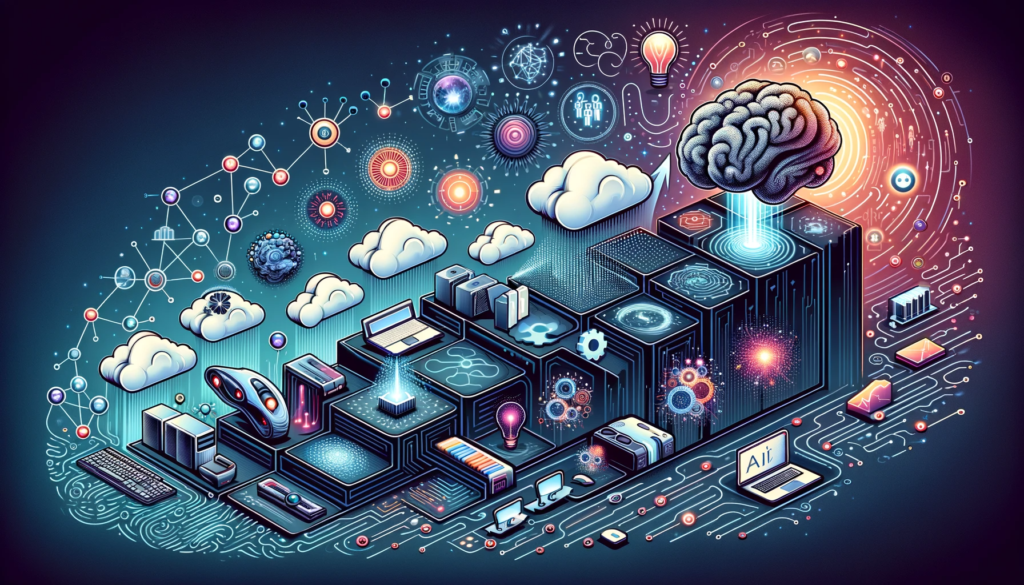AI’s early developments were initially constrained by limited data and computing resources. However, the big data revolution, characterized by an exponential increase in the amount and variety of data available, laid the groundwork for modern AI. This era allowed for the training of more sophisticated algorithms, enabling AI to learn from vast datasets and improve its predictive and analytical capabilities.

Cloud Computing and Enhanced Machine Power
The advent of cloud computing marked a significant milestone, providing virtually unlimited storage and computing resources. This democratized access to high-end computing power, allowing researchers and businesses to run complex AI models without needing expensive, dedicated infrastructure. The scalability and flexibility of cloud resources significantly accelerated AI development.
The Emergence of Machine Learning, Deep Learning, and Neural Networks
- Machine Learning (ML): With improved data and computing power, ML emerged as a key AI technique. ML algorithms learn from data, identifying patterns and making decisions with minimal human intervention.
- Deep Learning: A subset of ML, deep learning uses layered neural networks to analyze various factors in data. Inspired by the human brain’s structure, these neural networks can learn and make intelligent decisions on their own.
- Neural Networks: At the heart of deep learning, neural networks consist of nodes (like neurons) that process and transmit information. Their ability to learn complex patterns and relationships in data makes them ideal for tasks like image and speech recognition.
Continuous Evolution and Future Prospects
Today, AI continues to evolve, integrating with technologies like the Internet of Things (IoT), edge computing, and quantum computing. The future of AI promises even more sophisticated applications, from autonomous vehicles to personalized medicine, fundamentally altering how we interact with technology.
AI’s journey from its inception alongside big data to its current state, where it leverages cloud computing and advanced machine capabilities, illustrates a rapid and transformative evolution. This path has unlocked remarkable innovations in ML, deep learning, neural networks, and beyond, with potential yet to be fully realized.